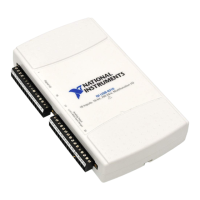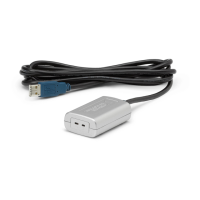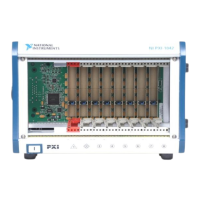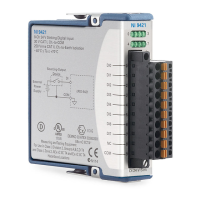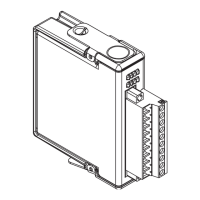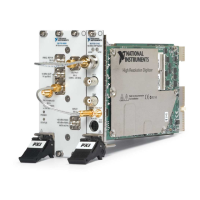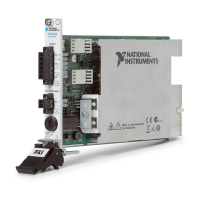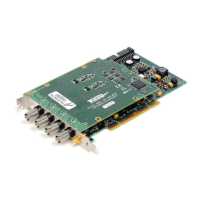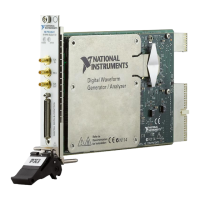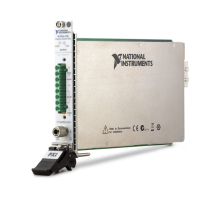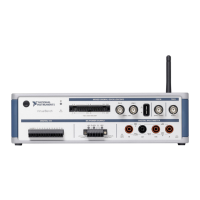Chapter 4 Analog Input
© National Instruments Corporation 4-27 NI USB-621x User Manual
Using Differential Connections for Floating Signal
Sources
It is important to connect the negative lead of a floating source to AI GND
(either directly or through a bias resistor). Otherwise, the source may float
out of the maximum working voltage range of the NI-PGIA and the DAQ
device returns erroneous data.
The easiest way to reference the source to AI GND is to connect the
positive side of the signal to AI+ and connect the negative side of the signal
to AI GND as well as to AI– without using resistors. This connection works
well for DC-coupled sources with low source impedance (less than 100 Ω).
Figure 4-16. Differential Connections for Floating Signal Sources
without Bias Resistors
However, for larger source impedances, this connection leaves the
differential signal path significantly off balance. Noise that couples
electrostatically onto the positive line does not couple onto the negative line
because it is connected to ground. This noise appears as a differential mode
signal instead of a common-mode signal, and thus appears in your data. In
this case, instead of directly connecting the negative line to AI GND,
connect the negative line to AI GND through a resistor that is about 100
times the equivalent source impedance. The resistor puts the signal path
nearly in balance, so that about the same amount of noise couples onto both
connections, yielding better rejection of electrostatically coupled noise.
This configuration does not load down the source (other than the very
high input impedance of the NI-PGIA).
–
+
Impedance
<100 Ω
AI GND
AI+
AI–
AI SENSE
V
s
Floating
Signal
Source
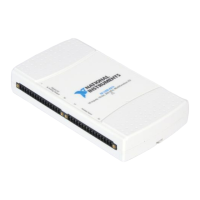
